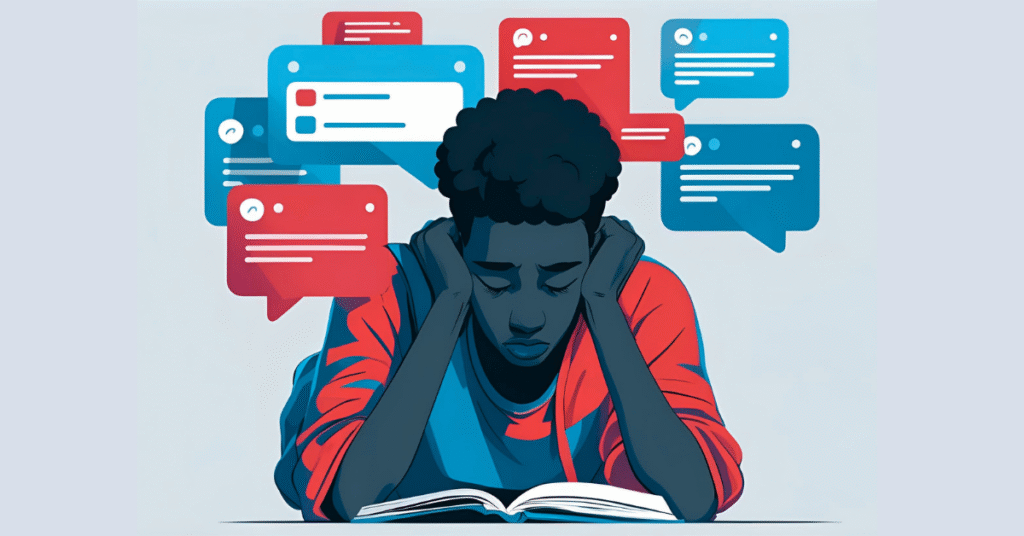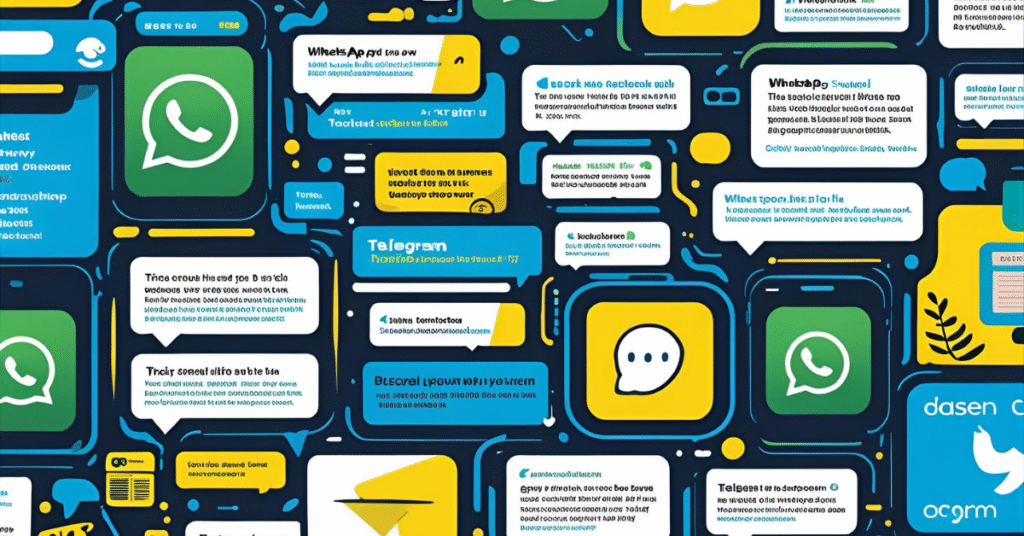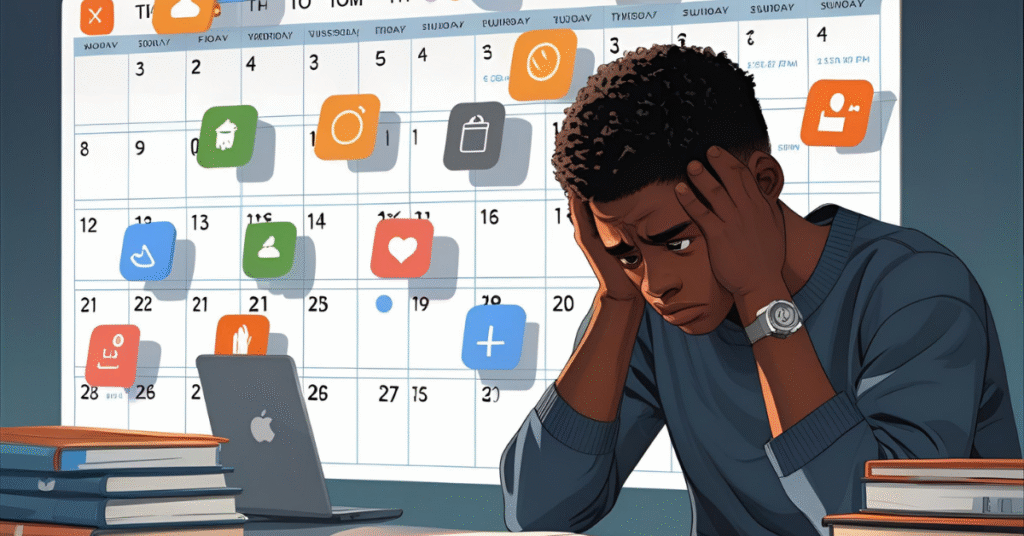Introduction: Too Much Info, Not Enough Clarity
A constant stream of alerts, messages, and opinions leads to a silent crisis: information overload. When young minds are overfed with data but undernourished in understanding, confusion is inevitable. And for JAMB and post-UTME students trying to navigate one of the most critical stages of their academic lives, this can be especially damaging.
From endless WhatsApp rumours to TikTok advice, conflicting school updates, and the pressure of keeping up with peers, today’s students are bombarded with information. And not just any information, conflicting and often unverified information that adds more noise than clarity.
Everyone is talking, but are your students truly hearing what matters?
What exactly is information overload doing to our students, and what can we, as educators and school leaders, do to help them cut through the noise?
Let’s break it down.
What is Information Overload?

Information overload happens when a person receives too much information at once or over time, making it difficult to process or make clear decisions. For students, this doesn’t just come from textbooks or lessons.
They are getting updates from:
- WhatsApp group chats
- Classmates sharing “breaking news”
- Social media platforms like TikTok, Instagram, and X
- Conflicting school website announcements
- Peer-to-peer conversations and family “advice”
This non-stop stream creates mental clutter, making it hard to filter what’s useful from what’s just noise. And because much of it is unverified, students often act on wrong or outdated information, leading to unnecessary panic or poor choices.
Social Media and Peer Pressure: A Recipe for Confusion

“Did you hear what they said on that group?”
That one sentence can throw a student into a spiral of doubt. One minute, they’re sure about their admission path, and the next, someone shares a “new deadline” or “secret tip” that sends them into full-blown anxiety.
In this space:
- Conflicting advice makes students second-guess their plans.
- False deadlines pressure them into rushed decisions.
- Rumours travel faster than facts.
With every new notification, their confidence shrinks. Instead of moving forward with clarity, they freeze, overwhelmed and unsure of what to believe or do next.
The Real Cost of Information Overload

It’s easy to dismiss all this as part of growing up in a digital age, but the effects of information overload are real and costly.
Here’s what many educators are seeing in their students:
- Drop in focus: Students struggle to concentrate on actual study materials.
- Increased anxiety: The constant flood of “what ifs” triggers stress.
- Delayed or wrong decisions: Students miss out on important opportunities or act on the wrong ones.
- Loss of self-trust: When nothing feels clear, students stop trusting their judgment.
Ultimately, information overload doesn’t just disrupt academic performance; it chips away at a student’s mental health and sense of direction.
What Students Actually Need: Filters, Not More Info

Your students don’t need more updates; they need better filters.
Here’s where you come in. As a teacher or school owner, you have the power to guide them toward clarity by:
- Teaching them to verify: Show them how to fact-check and confirm sources before reacting.
- Creating clarity spaces: Dedicate time during classes or tutorial sessions to answer questions and debunk rumours.
- Sharing trusted sources only: Limit your recommendations to official portals and verified updates.
- Encouraging digital discipline: Suggest turning off notifications during study hours or unfollowing unreliable accounts.
When students learn to pause, verify, and then act, they gain control over their information diet—and over their choices.
4 Practical Ways to Help Students Stay Clear-Headed
Here are a few simple, actionable steps you can introduce right away:
- Start “Weekly Clarity Moments”: A 10-minute check-in every week to review key updates and calm fears.
- Teach the ‘Rule of Two’: Before acting on any information, students must confirm it from at least two reliable sources.
- Use a shared noticeboard (online or offline) for verified information like admission lists, deadlines, and school updates.
- Host short workshops on digital literacy, especially for students who rely heavily on social media.
The goal isn’t to shut down the flow of information but to empower students to manage it wisely.
You Can Be the Difference

It’s easy to feel powerless when your students are drowning in digital noise, but your voice, clear, calm, and consistent, can cut through that fog.
Whether you’re helping them navigate the JAMB admission process or prepare for university life, your ability to simplify complex updates, verify facts, and provide emotional reassurance will go a long way.
Clear minds make better decisions. Let’s teach our students not just how to study, but how to stay clear-headed in a world that’s always talking.
Final Note
How do you help your students manage information overload? Do you have tips or tools that have worked in your school or centre? Share your insights in the comments or tag a fellow educator who needs to read this.




